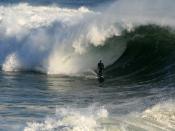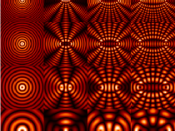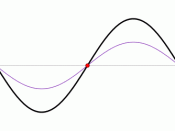A wave can bring along an image of a jump rope being moved up and down; the crest seen as the highest point of the rope and the trough seen as the lowest point. The wavelength is the distance between one point on a wave to the corresponding point on the successive wave. The amplitude of a wave is measured by taking ý of the wavelength. The wave height is the measurement from the crest to the trough of the wave. The frequency refers to the number of times the particles cycle around as the wave passes. The period is the amount of time it takes for two successive crests to pass a given point. The anatomy and the measurements of waves are significant while studying the causes and the different types of currents and waves in the ocean.
Waves are caused by wind blowing across the water, by this process the wind creates ripples making it easier to grip.
The waves allow the wind to transfer its energy to the water's surface; the rougher the water gets, the easier it is to transfer its energy. This process also promotes the exchange of gases: carbon dioxide into the oceans and oxygen out. The wind blowing above the water causes eddies and ripples to form. Depending on the fetch and time, the height and length of the wave will either increase or decrease.
Waves play a major role in the environment; without waves, winds would not be able to circulate the water and allow the transfer of energy and nutrients. With the currents and eddies, water is able to circulate nutrients and make the ocean more conducive to life. Waves move in an oscillating motion, where water particles are moving at the same time and in the same direction. This movement...


